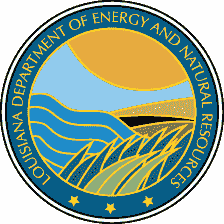Office of Conservation
Environmental Division >> E & P Waste Management Section >> RCRA Exempt & Non-Exempt Waste
RCRA Exempt & Non-Exempt Waste
In December of 1978, the Environmental Protection Agency (EPA) proposed hazardous waste management standards that included reduced requirements for several types of large volume wastes. Generally, EPA believed these large volume "special wastes" are lower in toxicity than other wastes being regulated as hazardous waste under RCRA. Subsequently, Congress exempted these wastes from the RCRA Subtitle C hazardous waste regulations pending a study and regulatory determination by EPA. In 1988, EPA issued a regulatory determination stating that control of exploration and production (E&P) wastes under RCRA Subtitle D was not warranted. Hence, E&P waste have remained exempt from Subtitle C regulations. This exemption, however, did not preclude these wastes from control under state regulations, under the less stringent RCRA Subtitle D solid waste regulations, or under other federal regulations. In addition, although they are relieved from regulation as hazardous wastes, the exemption does not mean these wastes could not present a hazard to human health and the environment if improperly managed. Statewide Order No 29-B provides guidelines for environmentlly sound management of these exempt wastes.
In the 1988 regulatory determination, EPA published lists of wastes regarded as exempt and non-exempt. The lists were provided as examples of wastes regarded as exempt or non-exempt; the lists were not to be considered comprehensive. The E&P waste wastes listed in this brochure closely track the exempt listing of the 1988 regulatory determination. Examples of non-exempt wastes are as follows:
- Unused fracturing fluids or acids;
- Gas plant cooling tower cleaning wastes;
- Painting wastes and waste solvents;
- Refinery wastes;
- Used equipment lubricating oils;
- Waste compressor oil, filters, and blowdown;
- Used hydraulic fluids.
Source: EPA document EPA530-K-95-003 (May 1995)
- Oil & Gas
- Energy
- Mineral Resources
- Conservation
- Coastal Management
-
Oil Spill Coordinator's Office
- Oil Spill Coordinator's Office Home
- Oil Spill Response
- Natural Resource Damage Assessment (NRDA)
- The Louisiana Regional Restoration Planning Program (RRP Program)
- Louisiana Regional Restoration Planning Program (RRP Program) Administrative Record
- Education and Outreach
- Acts, Regulations, Guidelines, & Plans
- About DENR
- Offices
- Media Center
- Contact Us
- Information Portals
- Featured Services
